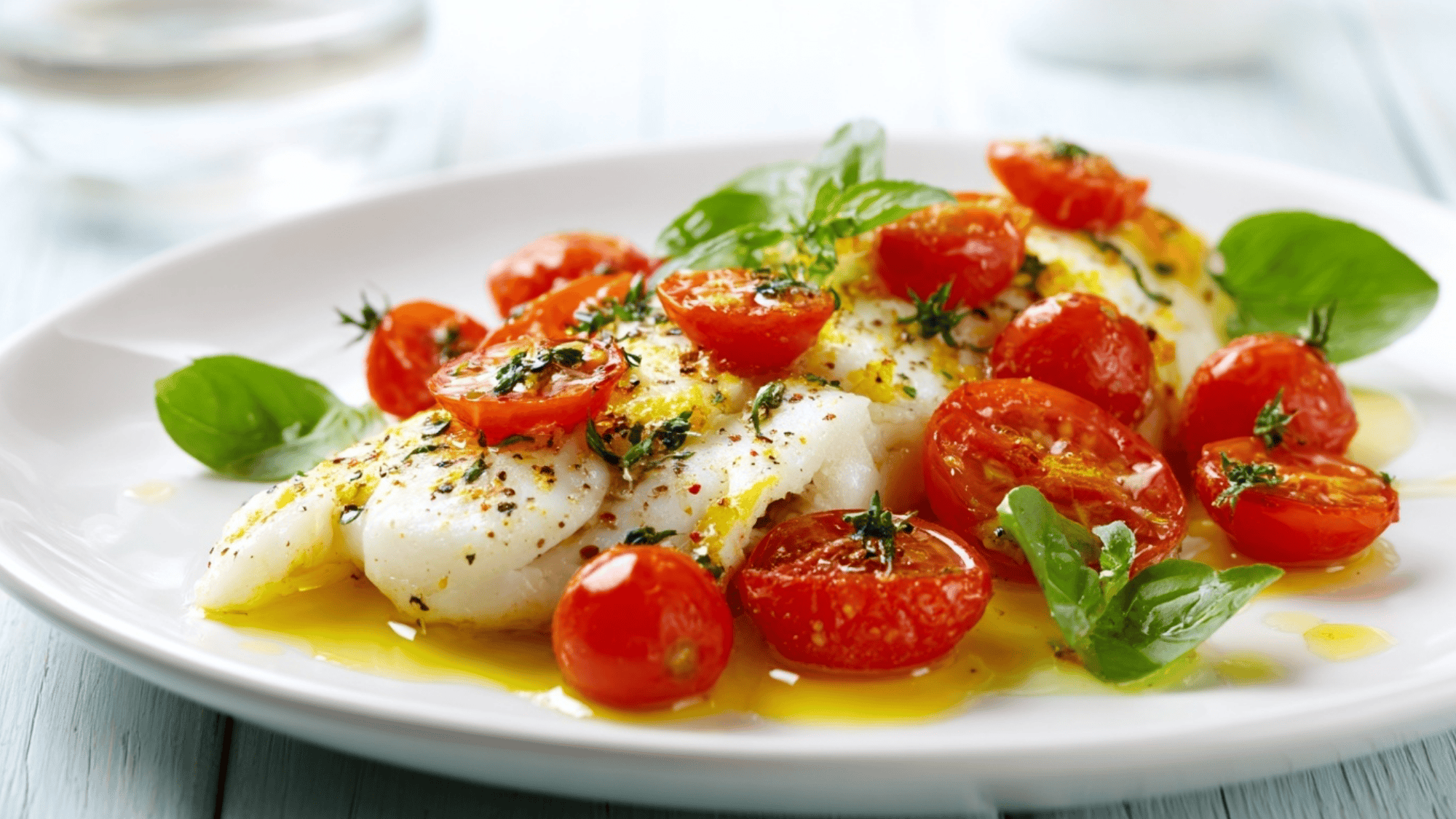Are you reaching for a third coffee by 2 PM, feeling drained even though you got enough sleep? Do sugar cravings dictate your afternoon snacking choices?
You’re not alone. The average American consumes 70-80 pounds of sugar per year, which is nearly 2.5 cups per week.
A 14-day no-sugar diet can offer the reset your body has been waiting for.
This simple two-week challenge helps break the cycle of added sugars, boosts stable energy, and reduces cravings by up to 87%.
With the right food list, smart meal planning, it becomes easier to stay consistent and experience real change.
What Is a No Sugar Diet?
A no-sugar diet means removing added sugars from your meals and snacks.
This includes table sugar, honey, maple syrup, agave nectar, and the hidden sugars lurking in packaged foods like granola bars, salad dressings, and flavored yogurts.
Natural sugars found in whole fruits and vegetables are typically included in moderation, especially low-sugar options like berries and leafy greens.
The goal isn’t to eliminate every trace of natural sweetness from your diet; it’s about cutting out the processed, refined sugars that spike your blood sugar and leave you craving more.
This approach differs from other diets.
While low-carb plans restrict all carbohydrates, intermittent fasting focuses on when you eat, and a no-sugar diet specifically targets added sugars while allowing complex carbohydrates from whole grains and starchy vegetables.
Why Try a 14-Day No Sugar Challenge?

A two-week no-sugar challenge can create fast, noticeable improvements in energy, cravings, mood, and overall health by removing added sugars from your daily diet.
- More stable energy: Without sugar spikes and crashes, your body maintains smoother blood sugar levels, giving you steady energy and clearer focus throughout the entire day.
- Reduced cravings: Removing added sugars helps reset taste buds, decreasing cravings and making naturally sweet foods like fruits, nuts, and vegetables taste far more satisfying.
- Weight changes: Many people lose 4–7 pounds from reduced bloating and inflammation while also experiencing easier digestion and less overall puffiness during the two-week period.
- Improved skin and sleep: Lower sugar intake reduces inflammation, often leading to clearer skin, deeper sleep, and fewer mood swings caused by rapid sugar fluctuations.
- Better overall wellness: With balanced energy, steadier appetite signals, and decreased inflammation, most people feel lighter, calmer, and more in control by day fourteen.
Note: If you’re pregnant, diabetic, on blood sugar–related medication, or managing health conditions, speak with a healthcare professional before beginning a no-sugar challenge.
What to Expect: The Adjustment Phase
Understanding what happens during each stage of a 14-day no-sugar challenge helps you stay committed, especially when symptoms feel uncomfortable or unexpected.
Your body goes through clear transitions as it adapts to life without added sugar.
Days 1–2: Initial Adjustment
You may feel tired and irritable, or experience mild headaches, as your body shifts away from relying on sugar for quick energy.
Staying hydrated and preparing simple, healthy snacks can help you handle this early transition.
Days 3–6: The Craving Peak
This is often the toughest period. Cravings may feel intense, brain fog can appear, and irritability is common. These sensations are normal signs of sugar dependence breaking.
Eating regular meals with protein, healthy fats, and fiber keeps your blood sugar stable and reduces the urge to reach for sweets.
Days 7–9: The Turning Point
Cravings begin to fade, and your taste buds start resetting.
Naturally sweet foods, like berries or apples, taste richer, energy stabilizes, and sleep often improves. Motivation typically spikes during this phase.
Days 10–14: Finding Your Rhythm
By the second week, most people feel lighter, clearer, and more in control. Hunger signals become more predictable, and overly sweet foods may feel less appealing.
This is when new habits start to feel natural, setting the foundation for long-term change.
How to Overcome the Most Common Challenges
Staying sugar-free can feel difficult at first, but understanding simple strategies makes the most common challenges much easier to manage.
- Intense sugar cravings: Eat protein and healthy fats, drink water, distract yourself briefly, and keep approved snacks ready to reduce temptation.
- Withdrawal symptoms: Hydrate well, add sea salt for electrolytes, rest more, and avoid intense workouts until your body fully adjusts.
- Hidden sugars: Read all labels, learn sugar’s other names, request no sauces, and choose whole, unprocessed foods whenever possible.
- Emotional eating: Recognize triggers, journal feelings, try calming activities, and reach out to supportive people instead of turning to sugar.
- Social pressure: Eat ahead of events, bring your own dish, explain simply, focus on conversation, and choose clean options when dining out.
Staying prepared and consistent helps these challenges fade quickly, allowing you to experience the benefits of a no-sugar lifestyle with greater confidence.
14-Day No Sugar Diet Food List: What to Eat
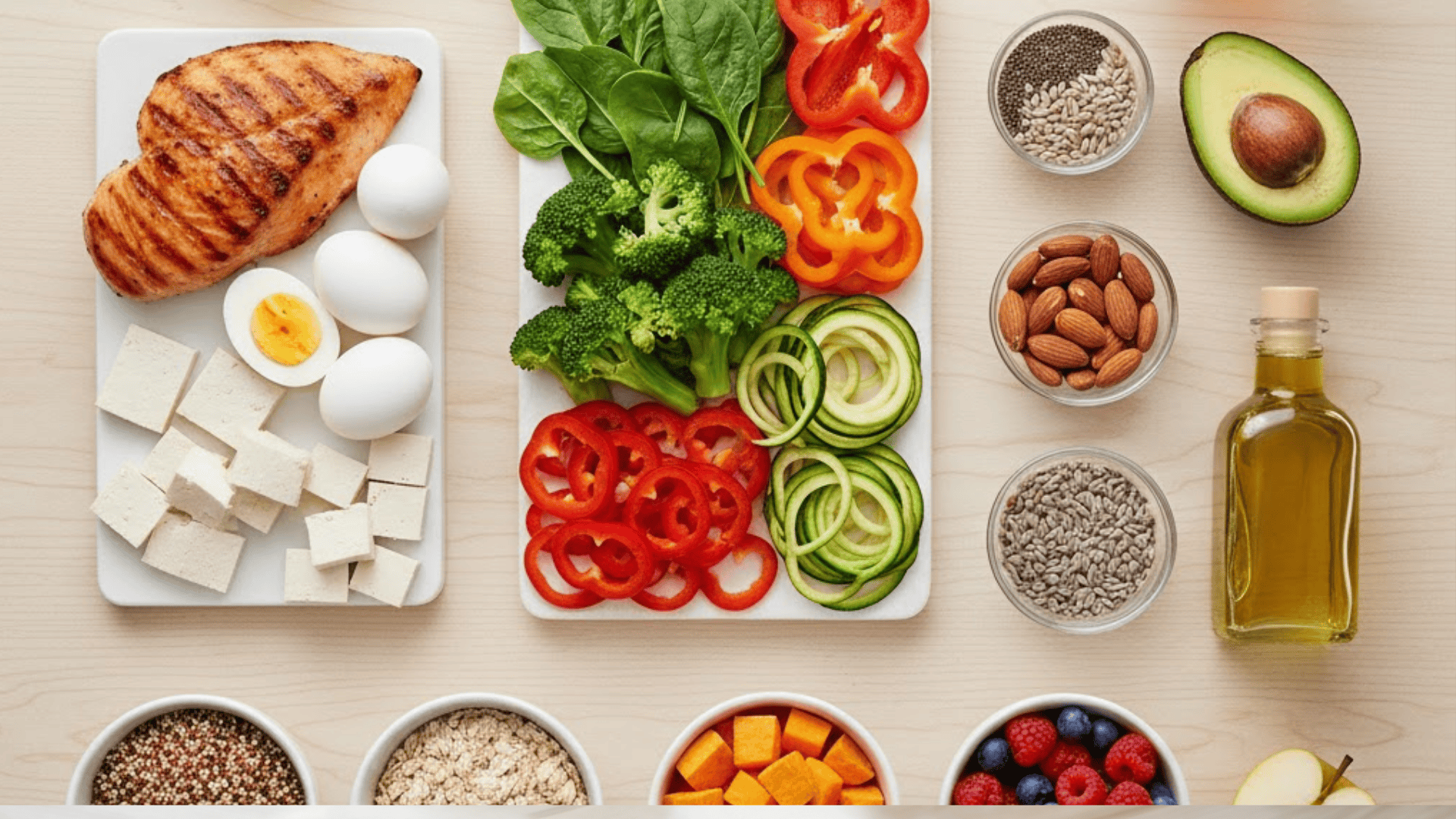
Choosing whole, nourishing foods makes it easier to stabilize energy, reduce cravings, and support your body throughout a 14-day no-sugar reset.
High-Quality Proteins
- Chicken breast, thighs, and ground chicken
- Turkey and ground turkey
- Salmon, tuna, cod, and other fish
- Eggs (scrambled, boiled, or in omelets)
- Tofu and tempeh
- Grass-fed beef and lean cuts of pork
- Greek yogurt (unsweetened, plain)
Non-Starchy Vegetables
- Leafy greens: spinach, kale, collards, lettuce, arugula
- Cruciferous vegetables: broccoli, cauliflower, Brussels sprouts, cabbage
- Other favorites: zucchini, bell peppers, cucumbers, tomatoes, mushrooms, asparagus, green beans
Starchy Vegetables and Whole Grains (in Moderation)
- Sweet potatoes and regular potatoes
- Quinoa, brown rice, and barley
- Rolled oats (not instant)
- Butternut squash and other winter squashes
Healthy Fats
- Avocados and avocado oil
- Olive oil and coconut oil
- Raw nuts: almonds, walnuts, pecans, cashews
- Seeds: chia, flax, pumpkin, sunflower
- Nut butters (check labels, no added sugar)
Low-Sugar Fruits
- Berries: strawberries, blueberries, raspberries, blackberries
- Green apples and kiwi
- Grapefruit and lemons/limes
- Small portions of melon
- Limit: bananas, grapes, mangoes, and dried fruits (these are higher in natural sugars)
Beans and Legumes
- Lentils, chickpeas, black beans, kidney beans
- These provide plant-based protein and fiber
Fermented Foods (for Gut Health)
- Kimchi, sauerkraut, unsweetened pickles
- Plain kefir (check for no added sugar)
- Kombucha (very carefully, many brands add sugar)
Beverages
- Water (plain or infused with cucumber, lemon, or mint)
- Herbal teas (unsweetened)
- Black coffee (unsweetened)
- Sparkling water with lime
Sticking to simple, nutrient-dense foods ensures consistent energy, fewer cravings, and a smoother transition into a sustainable, long-term low-sugar lifestyle.
14-Day No Sugar Diet Food List: What to Avoid
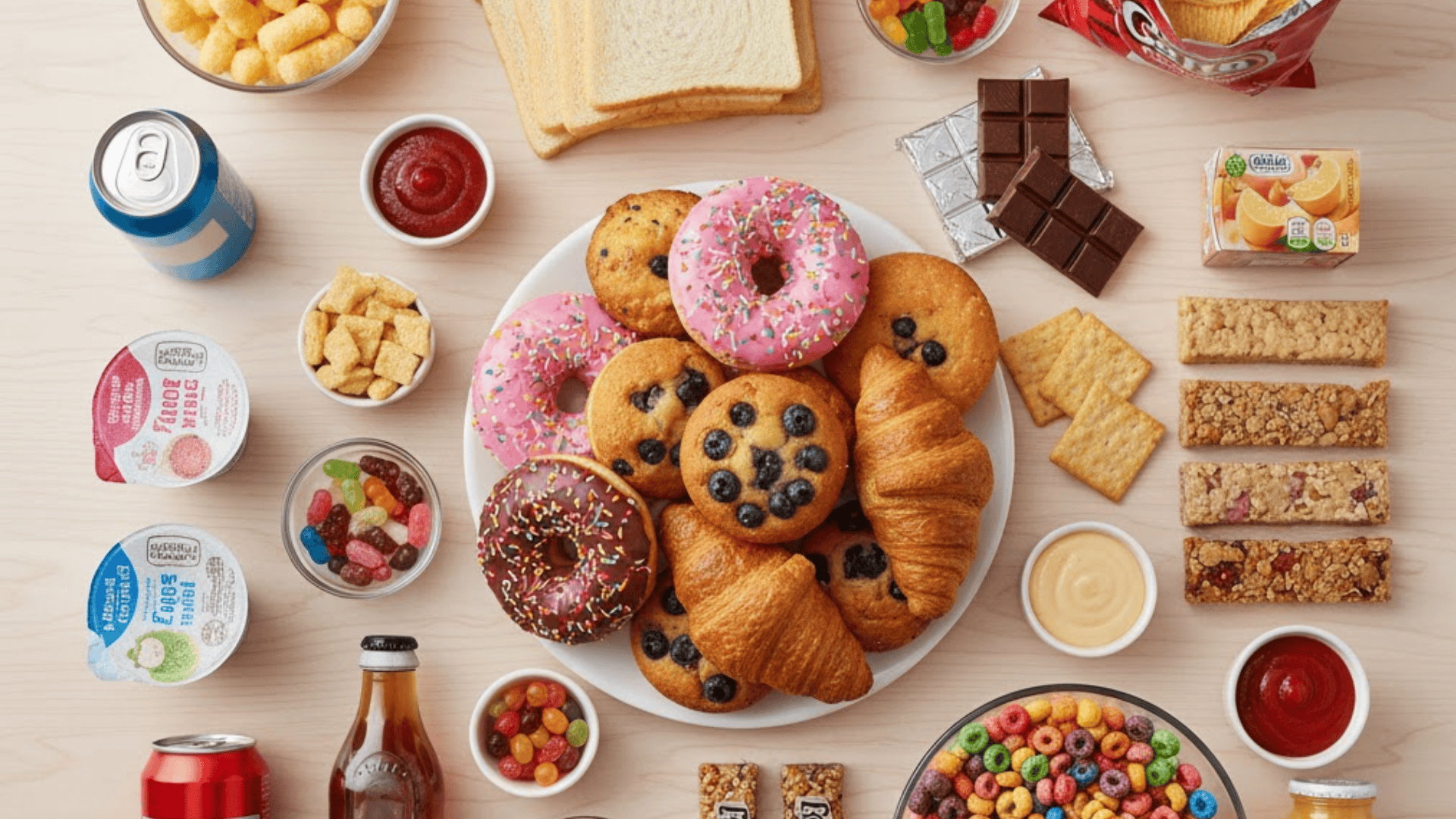
Knowing what to skip is just as important as knowing what to eat:
All Forms of Added Sugar
- White sugar, brown sugar, cane sugar
- Honey, maple syrup, agave nectar
- Corn syrup, high-fructose corn syrup
- Coconut sugar, date sugar
Sugary Drinks
- Soda and soft drinks
- Sweetened coffee drinks (lattes with flavored syrups)
- Sweet tea and sweetened iced tea
- Fruit juices (even “100% juice” contains concentrated natural sugars)
- Energy drinks and sweetened sports drinks
Packaged and Processed Foods with Hidden Sugars
- Most granola bars and protein bars
- Flavored yogurts
- Breakfast cereals (even “healthy” ones)
- Store-bought salad dressings and marinades
- Ketchup, BBQ sauce, teriyaki sauce
- Pasta sauce in jars (many contain added sugar)
- Processed meats like certain deli meats and bacon
Refined Carbohydrates
- White bread, bagels, and sandwich bread
- Pastries, donuts, muffins, and cakes
- White pasta
- Crackers and chips
- Pretzels
Artificial Sweeteners (During the 14 Days) Many health experts recommend avoiding artificial sweeteners like aspartame, sucralose, and saccharin during your 14-day challenge.
Even though they don’t contain sugar, they can maintain your sweet tooth and prevent your taste buds from fully resetting. After 14 days, you can reassess whether to include them.
Sample 14-Day No Sugar Meal Framework
This structured seven-day layout provides balanced, energizing meals using approved no-sugar foods while keeping preparation simple, flexible, and easy to follow.
Day 1
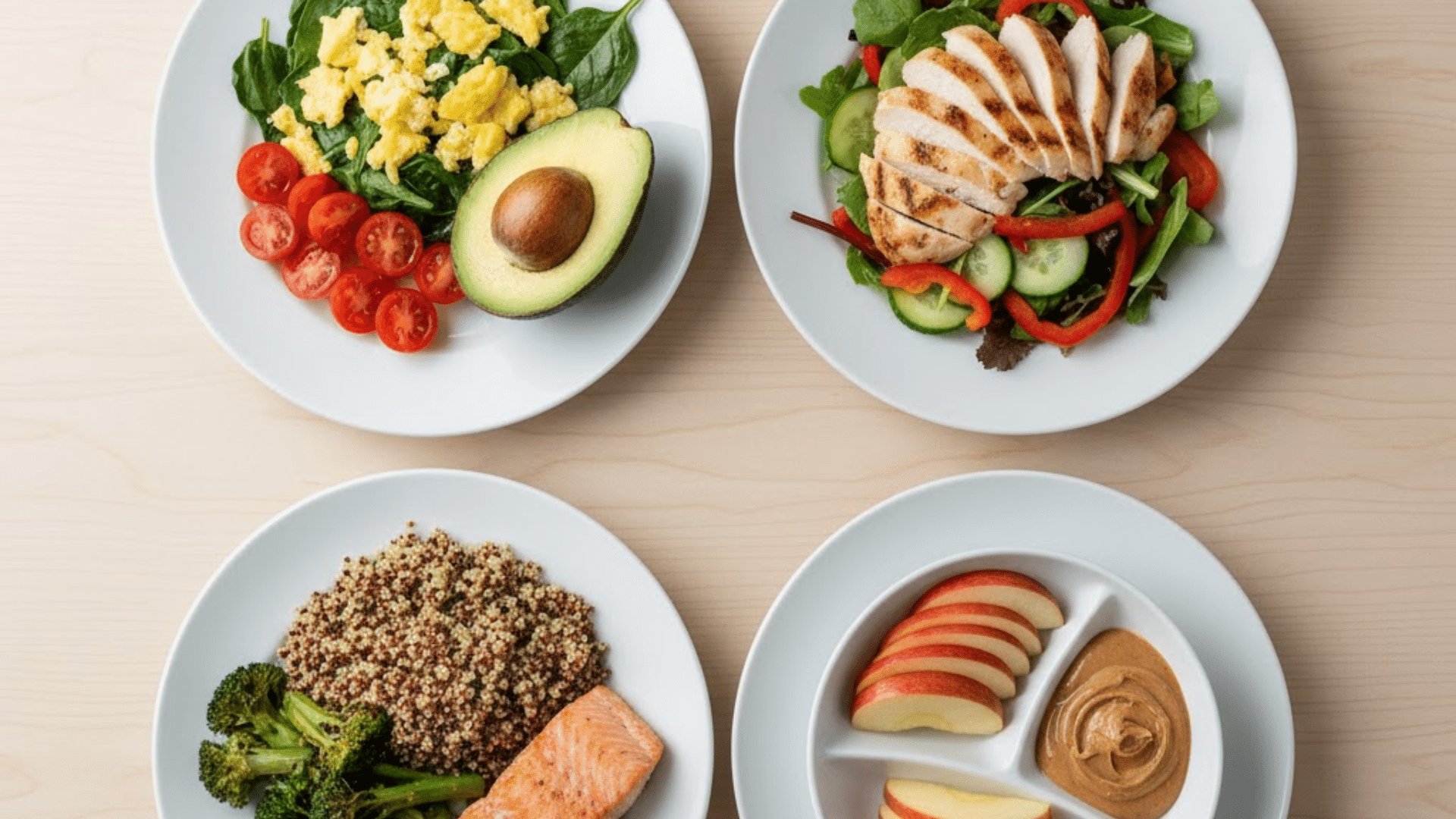
Start your no-sugar journey with simple, nourishing meals that balance protein, healthy fats, and vegetables to keep you energized throughout the day.
| Meal | Menu |
|---|---|
| Breakfast | Scrambled eggs with spinach, tomatoes, and half an avocado |
| Lunch | Grilled chicken salad with greens, cucumber, peppers, olive oil, lemon |
| Dinner | Baked salmon, roasted broccoli, quinoa |
| Snack | Apple slices with almond butter |
Day 2

Focus on light, refreshing meals that maintain stable energy, help reduce early sugar cravings, and support your daily nutritional needs effortlessly.
| Meal | Menu |
|---|---|
| Breakfast | Plain Greek yogurt with berries and chia seeds |
| Lunch | Turkey lettuce wraps with avocado and mustard |
| Dinner | Chicken stir-fry with mixed vegetables over cauliflower rice |
| Snack | Raw almonds |
Day 3

Today emphasizes hearty, satisfying meals that keep you full longer, helping you push through the toughest craving window with confidence and control.
| Meal | Menu |
|---|---|
| Breakfast | Veggie omelet with mushrooms, peppers, onions |
| Lunch | Tuna salad over mixed greens with olive oil |
| Dinner | Turkey burger (no bun), sweet potato wedges, green beans |
| Snack | Celery sticks with natural peanut butter |
Day 4
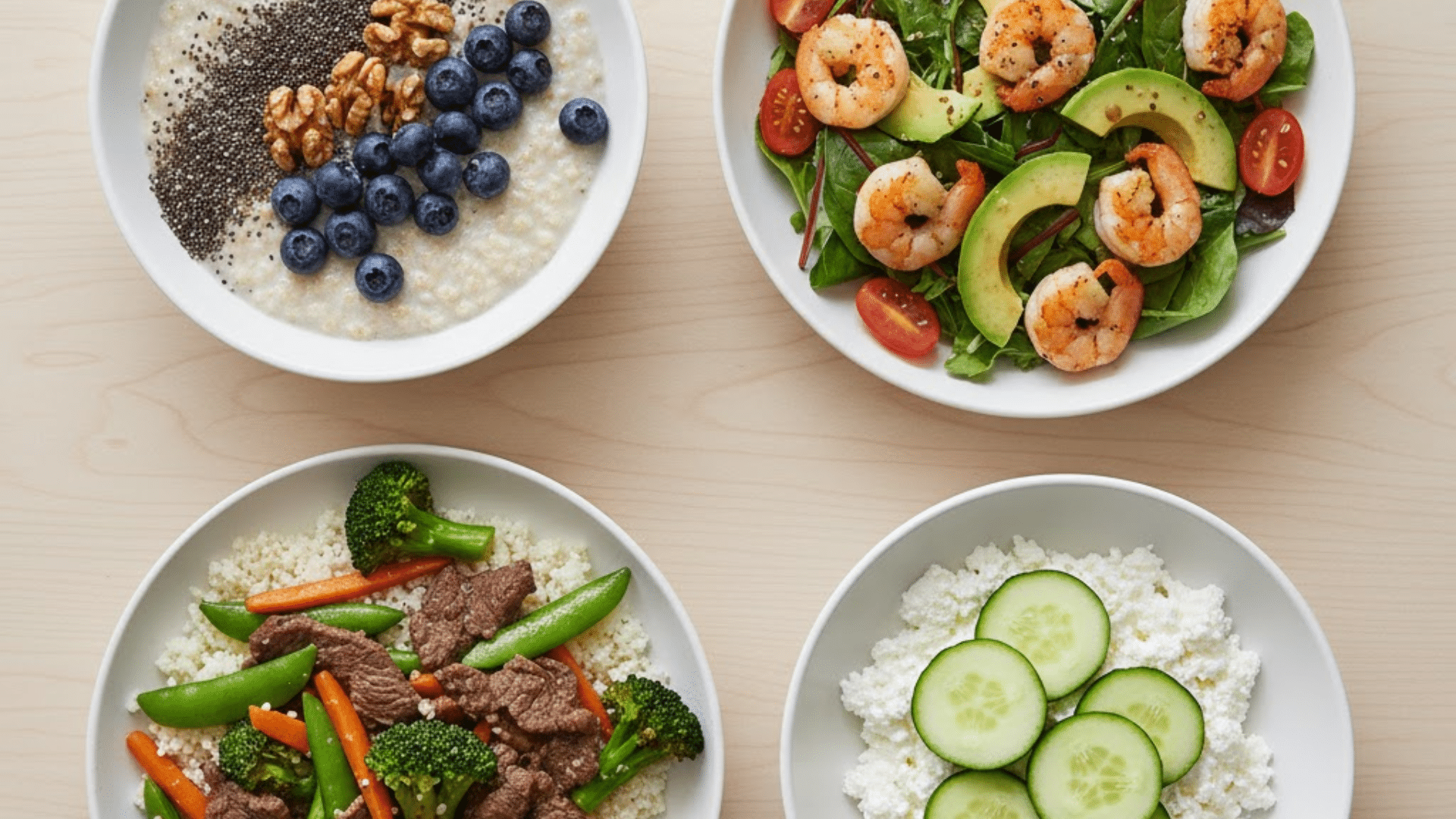
Your body begins adjusting more smoothly, so enjoy meals rich in fiber, protein, and healthy fats to stay satisfied and energized all day.
| Meal | Menu |
|---|---|
| Breakfast | Oatmeal with chia seeds, walnuts, and blueberries |
| Lunch | Grilled shrimp salad with greens, avocado, citrus dressing |
| Dinner | Beef stir-fry with broccoli, carrots, snap peas |
| Snack | Cottage cheese with cucumbers |
Day 5

Today’s meals highlight nutrient-dense ingredients designed to support digestion, reduce inflammation, and keep your energy steady naturally from morning until evening.
| Meal | Menu |
|---|---|
| Breakfast | Eggs with sautéed kale and mushrooms |
| Lunch | Chickpea and quinoa bowl with spinach and peppers |
| Dinner | Baked cod, asparagus, and roasted sweet potatoes |
| Snack | Mixed nuts |
Day 6
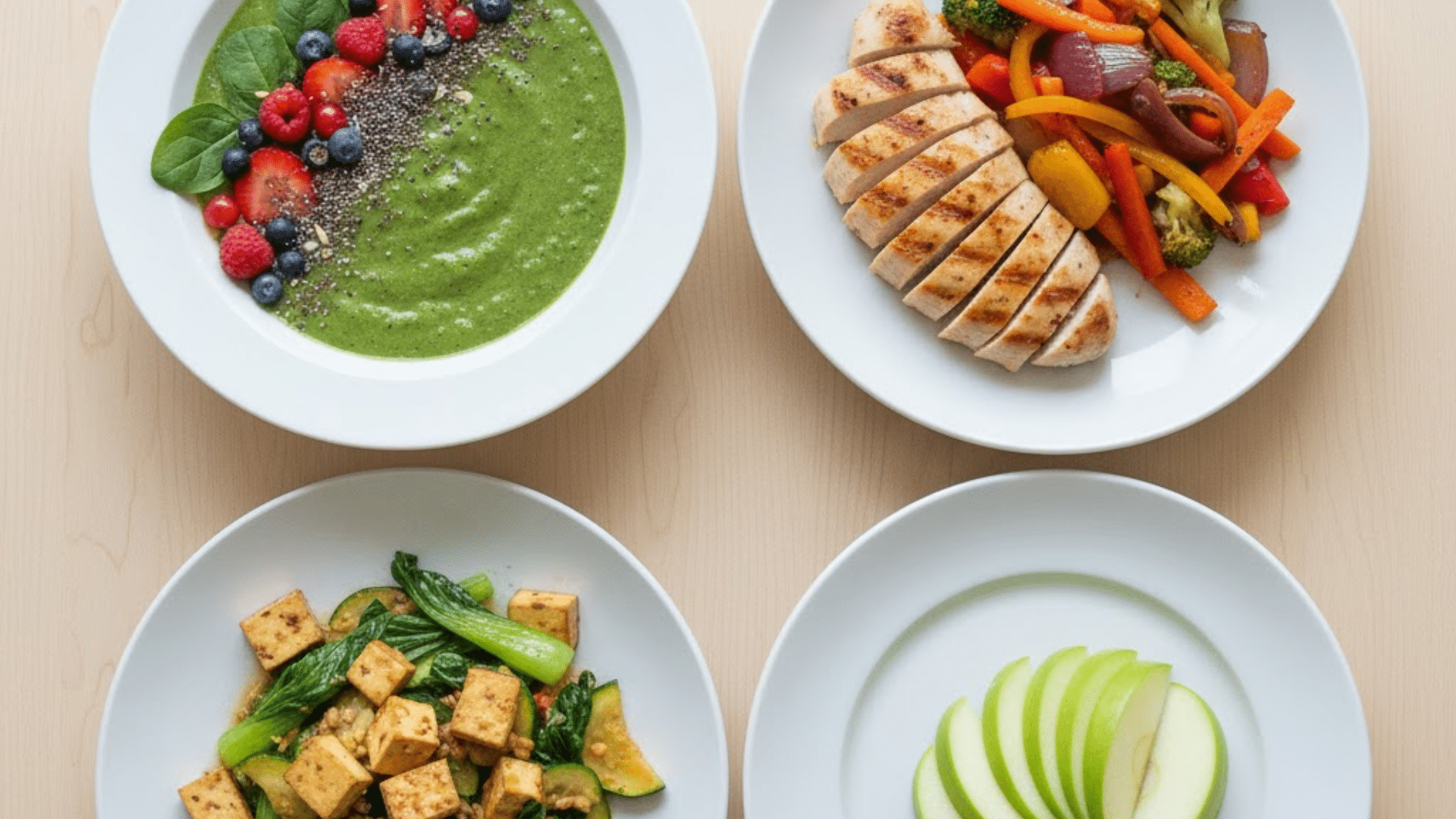
As cravings continue fading, nourish your body with balanced meals featuring vibrant vegetables, lean proteins, and wholesome ingredients that reinforce steady progress.
| Meal | Menu |
|---|---|
| Breakfast | Smoothie with spinach, berries, chia seeds, and almond milk |
| Lunch | Chicken breast with roasted vegetables |
| Dinner | Tofu stir-fry with bok choy and zucchini |
| Snack | Sliced green apple |
Day 7
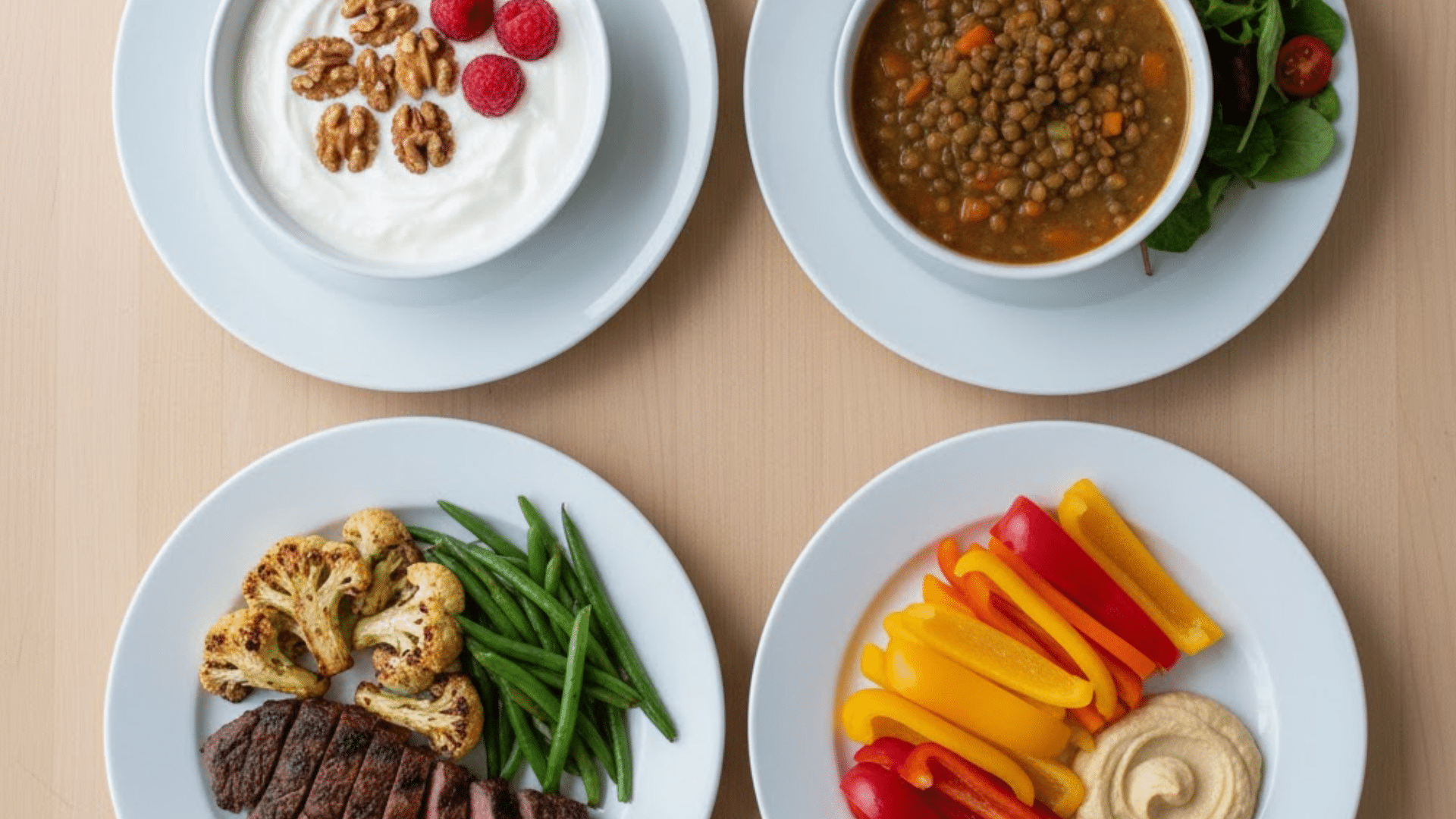
End your first week strong with flavorful, stabilizing meals that reinforce new habits, boost energy, and prepare you for the second half of the challenge.
| Meal | Menu |
|---|---|
| Breakfast | Greek yogurt with walnuts and raspberries |
| Lunch | Lentil soup with a simple side salad |
| Dinner | Grilled steak with roasted cauliflower and green beans |
| Snack | Bell pepper slices with hummus |
For days eight through fourteen, simply repeat the same framework while rotating proteins, vegetables, grains, and snacks to keep meals interesting.
Small variations add flavor, prevent boredom, reduce prep time, and help you stay fully committed to completing the entire no-sugar challenge successfully.
Meal Prep Tips:
- Cook proteins in batches at the start of the week
- Pre-chop vegetables for easy assembly
- Make a large salad base and portion it out
- Prepare snack bags with nuts and cut vegetables
How to Budget Smartly for a No Sugar Diet
Eating no sugar doesn’t have to cost more; smart planning often makes it cheaper.
By skipping sugary drinks, packaged snacks, flavored coffees, and processed “health foods,” most people spend less overall.
Affordable proteins like eggs, canned tuna, whole chicken, ground turkey, and dried beans stretch your budget, while frozen vegetables, seasonal produce, store brands, and bulk staples like oats, rice, and quinoa cut costs further.
Simple swaps, homemade dressings, whole vegetables, and bulk nuts- save money daily. Meal prepping prevents waste and reduces takeout spending.
With strategic shopping, a no-sugar diet typically costs $130–160 total, averaging just $9–11 per day.
Tips for Success: How to Stay on Track
Staying consistent on a no-sugar lifestyle becomes far easier when you prepare ahead, recognize triggers, and create habits that support long-term progress.
- Plan and prepare: Clean your pantry, make a smart grocery list, shop when full, and prep meals so healthy choices are always ready.
- Keep satisfying snacks: Stock hard-boiled eggs, pre-cut veggies with hummus, Greek yogurt with berries, portioned nuts, and cheese cubes for quick craving control.
- Stay hydrated: Sip water consistently, aim for several glasses daily, and use herbal teas or sparkling water with lemon for extra variety.
- Know your triggers: Notice when cravings appear and replace sugar-seeking behaviors with walking, hobbies, deep breathing, journaling, or supportive conversations.
- Handle social situations: Review menus early, choose grilled proteins with veggies, request sauces separately, skip bread and desserts, and bring your own dressing.
Building awareness, preparation, and supportive routines helps you stay motivated, reduce cravings, and confidently maintain your commitment to a healthier, no-sugar lifestyle.
What Happens After 14 Days?
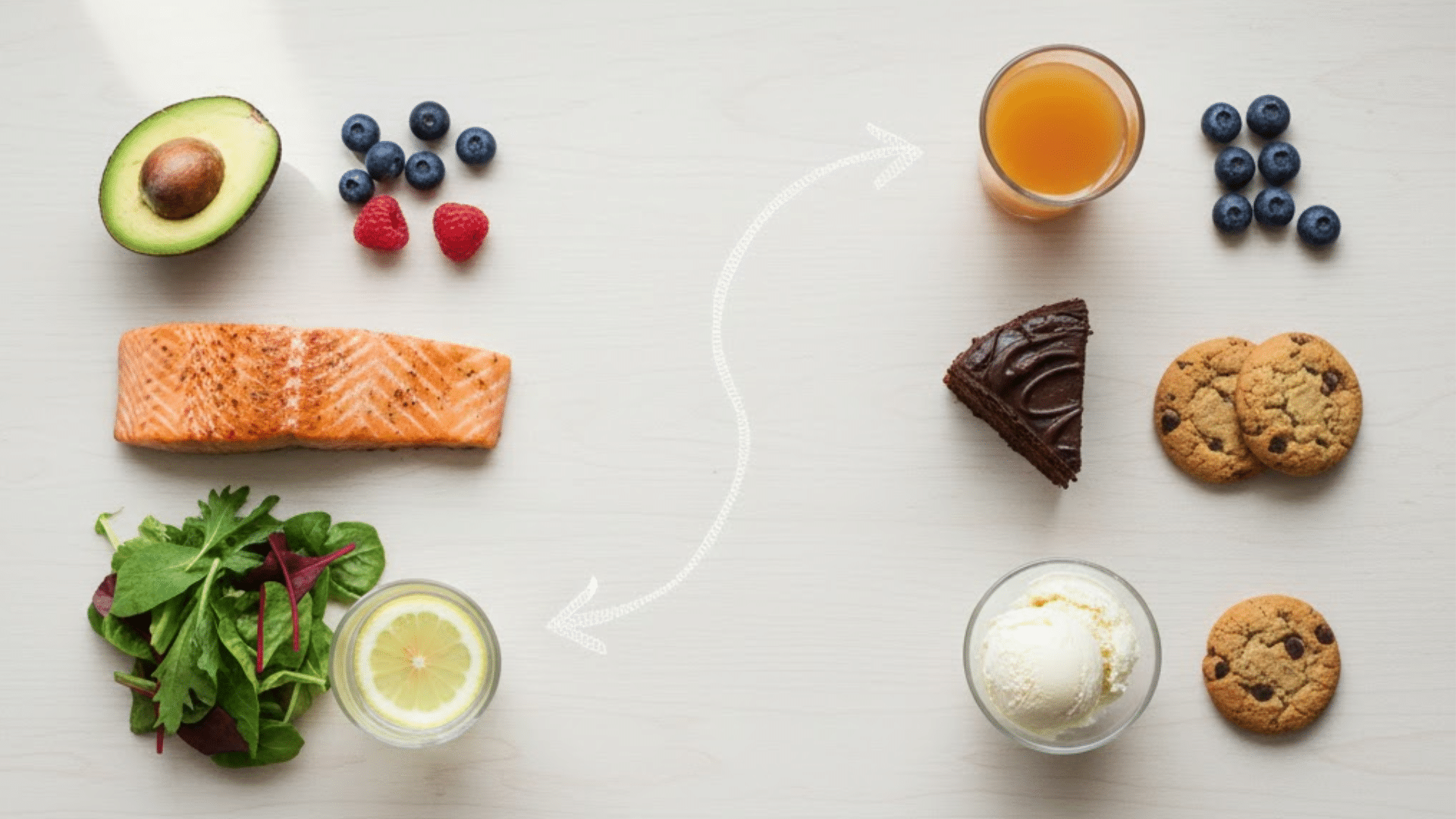
Many people feel so much better after two weeks that they continue limiting added sugars long-term. Others choose to reintroduce some sweeteners in moderation. Either approach is valid.
If you decide to reintroduce sugar:
- Do it gradually, add back one type of sweetener at a time
- Notice how your body responds. Do you feel energy crashes? Do cravings return?
- Consider keeping refined sugar and sugary drinks out of your regular diet while occasionally enjoying desserts on special occasions
- Focus on maintaining the habit of reading labels and choosing whole foods most of the time
The real goal isn’t perfection. It’s developing awareness about how sugar affects your body and making choices that support your health and energy levels.
Ready To Start Your 14-Day Challenge?
You’re now equipped with a clear food list, smart meal strategies, and practical tips to help you stay consistent.
This no-sugar challenge isn’t about perfection; it’s about progress, awareness, and resetting your habits.
The first few days may feel tough, but your body will adjust, cravings will ease, and your energy and clarity will steadily improve.
Many people feel noticeably lighter, more focused, and more in control by the end.
Clear your pantry, create your grocery list, choose your start date, and commit fully. Your future self will thank you for beginning.
Frequently Asked Questions
Can I Eat Out At Fast-Food Restaurants On A No-Sugar Diet?
Choose bunless burgers, grilled proteins, simple salads, and water, while avoiding sauces, breading, and sugary beverages.
Will My Workouts Change When Cutting Out Sugar?
Expect slightly lower energy initially, but performance usually improves once your body adapts to steady fuel sources.
Do I Need Supplements While Avoiding Sugar?
Most don’t need supplements, though electrolytes or magnesium may help during adjustment if recommended by professionals.
Can A Vegetarian Or Vegan Follow A No-Sugar Diet Easily?
Yes, using lentils, tofu, tempeh, beans, nuts, seeds, and vegetables for balanced, satisfying, sugar-free meals.



